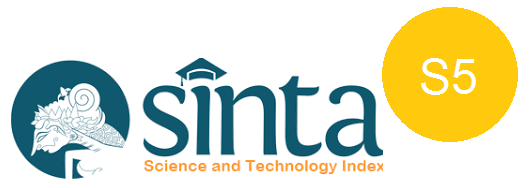FOREIGNIZATION AND DOMESTICATION IN TRANSLATING CULTURE-SPECIFIC ITEMS IN THE ENGLISH TRANSLATION OF AHMAD TOHARI’S LINTANG KEMUKUS
DOI:
https://doi.org/10.47313/pujangga.v2i1.386Abstract
ABSTRACT
A good translation has become a bridge among different cultures from different countries. The terms
foreignization and domestication have been proposed to deal with culture-specific items found in the source
text. Both terms have become the focus of arguement in the recent years. The purpose of this research is to
identify translation procedures in translating culture specific items that are termed as foreignizing and
domesticating and to identify how foreignization and domestication are applied in translating culture specific
items. The method used is qualitative descriptive method. The data analysis shows that in translating the
source text, translator prefers to apply domestication. There are 74.64% data which are translated using
domestication and only 23.36% data are translated using foreignization. Domestication is prefered as it will
allow target text readers to understand the text easily. Moreover, the minority position of the source text
cultureof does not allow foreignization to be applied in a greater extent. Foreignization is only applied to
translate central culture-specific items in order to bring the local nuanse of the source text culture.
Keywords: translation, forignization, domestication, culture-specific items
References
Baker, Mona. 1992. In Other Words: A Course Book on Translation. London:
Routledge.
Larson, Mildred L. 1984. Meaning-Based Translation: A Guide to Cross
-Language Equivalence.Lanham and New York: University Press of
America.
Lewis, Richard D. 2006. When Cultures Collide: Leading across Cultures. Boston
and London: NicolasBrealey International.
Meyer, Ingrid.2006. Lexicography, Terminology, and Translation. Ontario:
University of Ottawa Press.
Munday, Jeremy.2008. Introducing Translation Studies: Theories and
Applications. 2nd Edition.London-New York: Routledge
Newmark, Peter. 2010. Translation andCulture. In Meaning in Translation. Ed.
B. Lewandowska-Tomaszczyk. Frankfurt: Peter Long GmbH
Schäffner, Christina and Uwe Wiesemann. 2001. Annotated Texts for Translation:
EnglishGerman:Functionalist Approaches Illustrated. Frankfurt:
Multilingual Matters.
Venuti, Lawrence. 1995. TheTranslator‟s Invisibility: A History of Translation.
London and New York:Routledge.
_______. 1998. The Scandals of Translation: Towards an Ethics of Difference.
London and New York: Routledge.
_______. 2000. Translation, Community, Utopia. Venuti (ed).The Translation
Studies Reader,London: Routledge.









